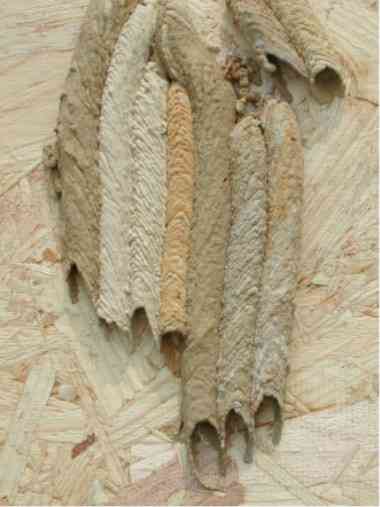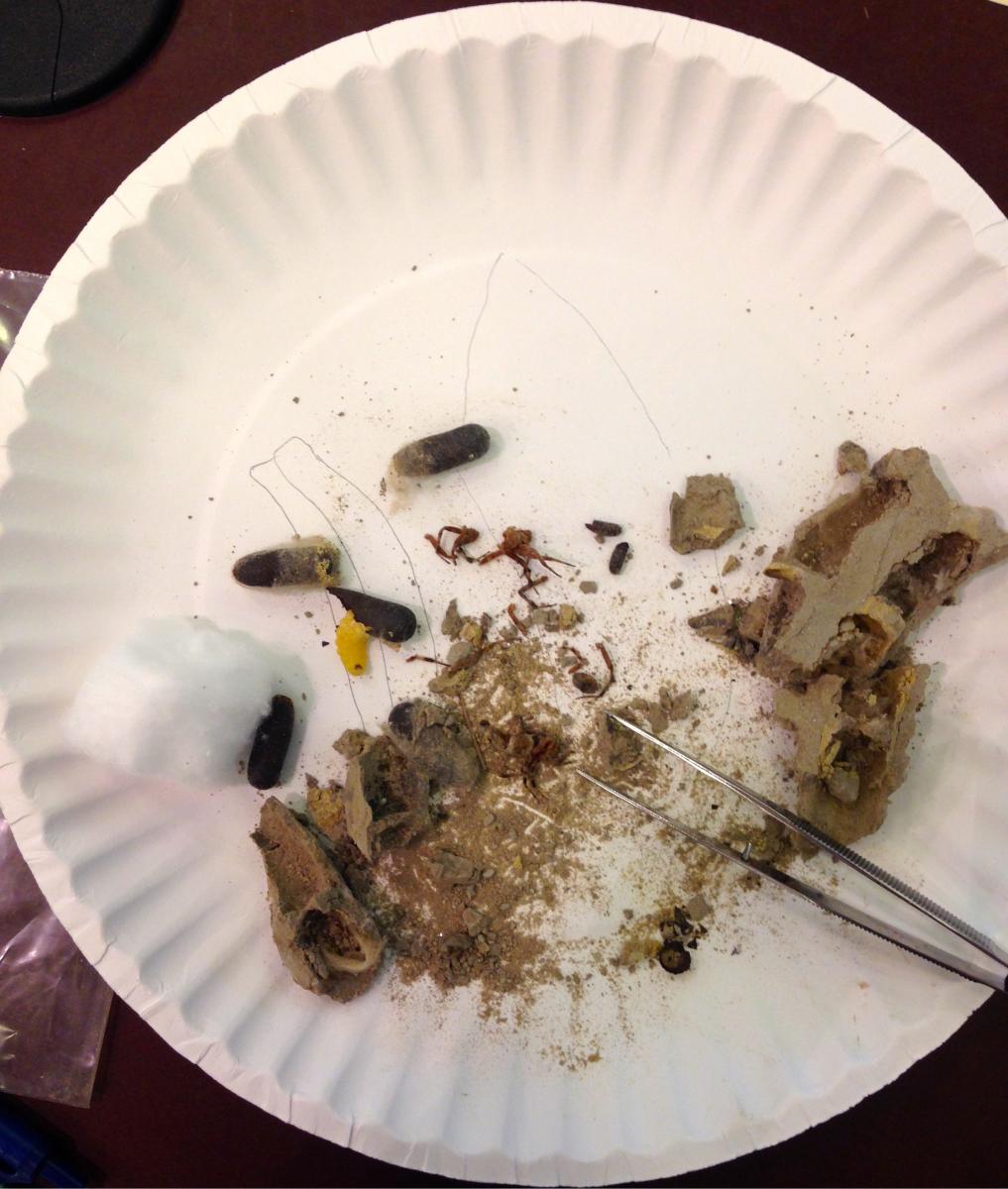Inside One Wasp's Lair
When it comes to bugs, I'm pretty squeamish. So when Bob Matthews, a Professor Emeritus of Entomology at the University of Georgia, handed me two clay tubes fused together and told me to break them open with tweezers to look for paralyzed spiders, fly cocoons, and live wasp larvae, I really didn't want to do it.
I was shamed into action by the fearlessness of the people at lab benches around me: K-12 teachers from all over the U.S. who had come to Washington, D.C. for Biodiversity Week, a professional development training course that is part of the Smithsonian Science Educational Academies for Teachers (SSEATS). The teachers set right to work, poking the insect-laden tubes with pencils and breaking them apart with their hands.
Slightly curved and about five inches long, the tubes on the paper plate in front of me had been broken off of a nest made by a wasp called an organ pipe mud dauber. The wasp's name reflects its primary calling in life: building a series of hollow mud tubes that together look like Pan's flute. By carrying mud in her mouth one tiny morsel at a time to a spot in a barn, under a bridge, or in some other protected area, the female wasp painstakingly molds the nest where she will deposit her eggs.

An organ pipe mud dauber. (Image by Jon Triffo from fcps.edu.)
I pierced the first section of the tube with the sharp point of my tweezers. I felt something squishy through the hole I'd made in the clay. Recoiling slightly, I took another more tentative stab. A fuzzy, black, round rod gradually emerged. With enough of the mud gone, I clamped the rod around the middle and extracted it.
The rod was a cocoon, surrounded by silky fibers and perfectly smooth all around. Inside, as I found out with a little more poking, was a yellow, flaccid larva. When the mud dauber had laid her egg in that tube, her intention was for the larva to mature and then fly out the bottom end. This larva hadn't quite made it.
I opened two more compartments of the segmented tube, each bearing similar inch-long cocoons sheathed in silk fuzz and protecting dead larvae. Then things got interesting. The next compartment I penetrated had no cocoon and no larva. Instead, it was -- I shuddered -- full of spiders. The dead insects were heaped into the inch-long space, their torsos dried out and crumpled, sealed in the mud. Several dismembered legs, kinked brokenly, were strewn among the bodies. It was like a mass spider grave, Aragog's lair in miniature.

An organ pipe mud dauber's nest. The different colors indicate that the wasp used mud from different areas for different tubes. (Image by David L. Green from pollinator.com.)
The compartment filled with shriveled spiders actually signaled more death than I'd imagined. After the mud dauber creates her tube-shaped clay nest, she partitions it into compartments. She then buzzes across the landscape, descending pitilessly upon spiders she finds in plants. Like a cheese connoisseur, she snobbishly selects each insect according to her taste (only a member of one of few particular species will do) and then plunges her stinger into its body. The sting doesn't kill the unfortunate insect: it injects a toxin, which paralyzes it.
Utterly helpless, the spider is carried by the mud dauber back to the nest and dropped into the tube. The mud dauber flies back and forth, stunning spiders and shoving them into her den, until she has stacked each compartment with up to 20 paralyzed -- but still living -- spiders. She lays one larva egg in each section, then seals the tube and flies away.
When the larva egg hatches, the grub has a tremendous feast. It eats everything -- eyes, bodies, legs -- until the compartment is spotless. By that point, the grub is a fat maggot, having just eaten the largest meal it will ever have. It spins a few silk fibers to protect itself from the clay dust of its earthy home and then secretes black goo. It rotates, spinning round and round, until the goo entirely surrounds it. In that position the goo hardens as a cocoon, and the grub starts to transform.

This is the plate upon which my mud dauber nest lay destroyed by the end of the day. At the top are a few cocoons, one with a yellow larva curving out of it. Difficult to make out are spider bodies. Most of the rest is crushed clay. (Image by Julia Rothchild.)
Although the image of larvae hatching into a sealed grave of paralyzed spiders and eating them seems very wrong, it is part of the life cycle planned out and executed by the mother mud dauber. But things don't always go as planned. The section full of dead spiders that I found indicates that in that compartment, the larva did not hatch and eat its fill. That particular unit had been infiltrated by an entirely different species, a fly, which had bored through the clay, consumed the larva, snacked on some of the spiders, squatted for a while, and then flown away.
The paper plate upon which I dissected my nest looked like a certified disaster zone by the end of the day. Clay dust and jagged pieces of the pilfered pipes were scattered everywhere. Cocoons, some of them ripped open with lifeless larvae oozing out, lay like engorged rat droppings. The spiders looked even spookier than spiders usually do. I was a bit taken aback by what I'd done to this nest, which, when it arrived in front of me, had been contained and clean and organized, its contorted insect remains hidden from view. I'd slashed it and stabbed it, destroyed this place of birth entirely.
But I guess that's what scientists do -- they take apart things in order to, in the long term, promote comprehension. The teachers in the room around me put any live larvae or spiders they had found into plastic tubes, so that Bob could keep them. We threw away our paper plates, returned our tweezers, and cleaned off our desks. And we left the lab with firsthand knowledge of what's inside an organ pipe, and also, perhaps, a somewhat greater understanding about life and birth in nature.
This event occurred in the Q?rius lab of the National Museum of Natural History. For more information about mud daubers, check out the work done by Bob Matthews. For more information about SSEATS professional development, click here.
